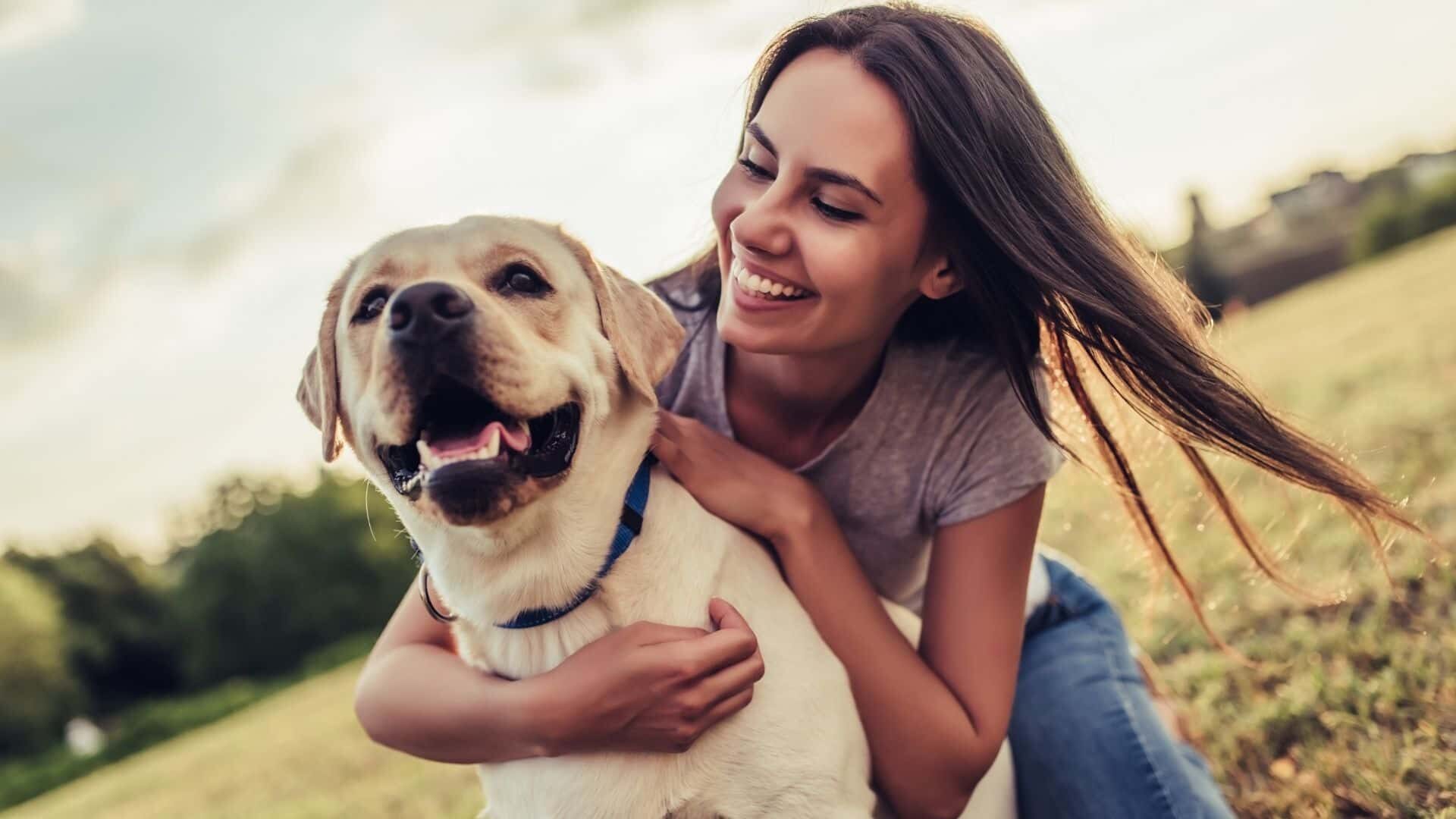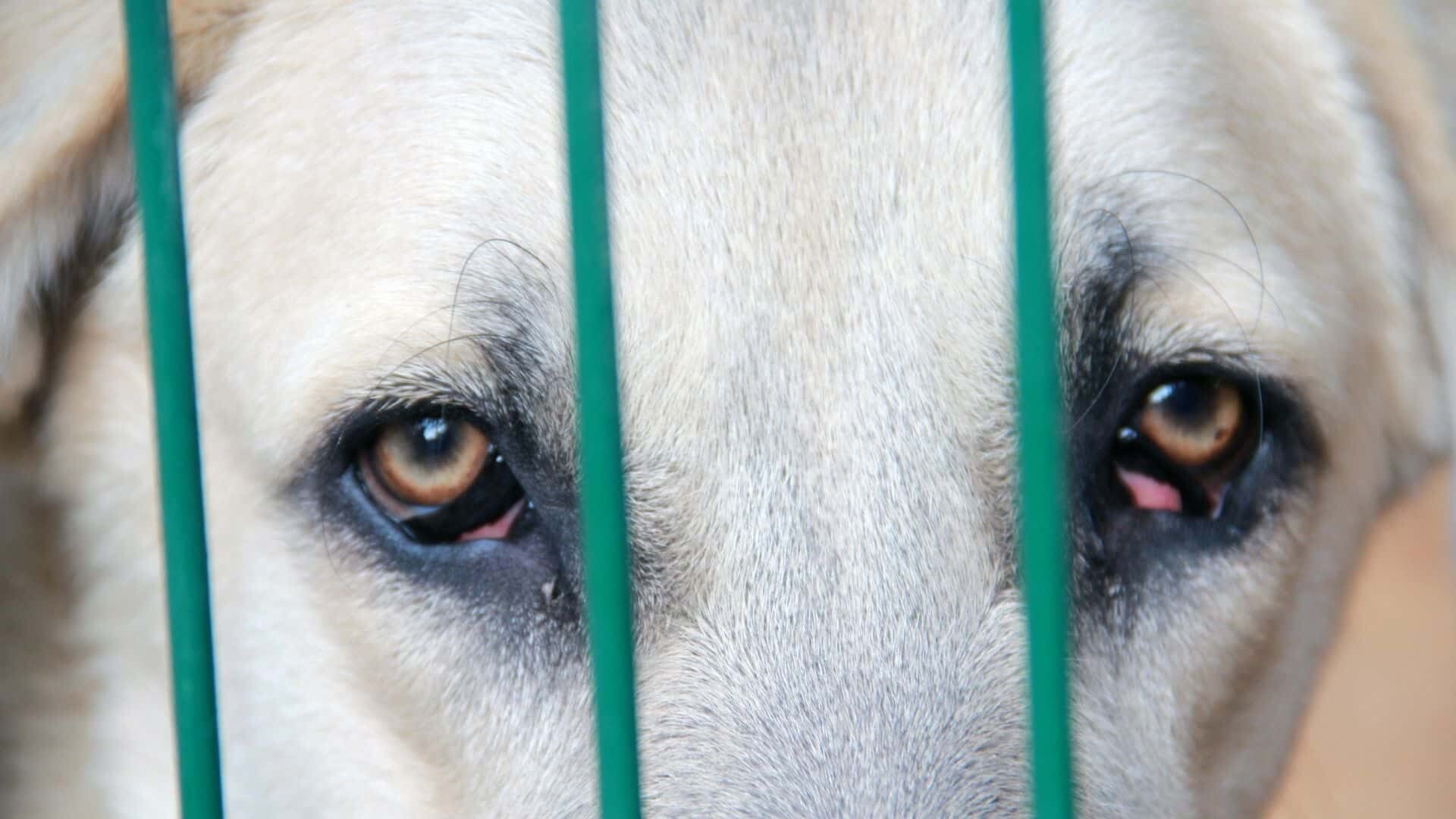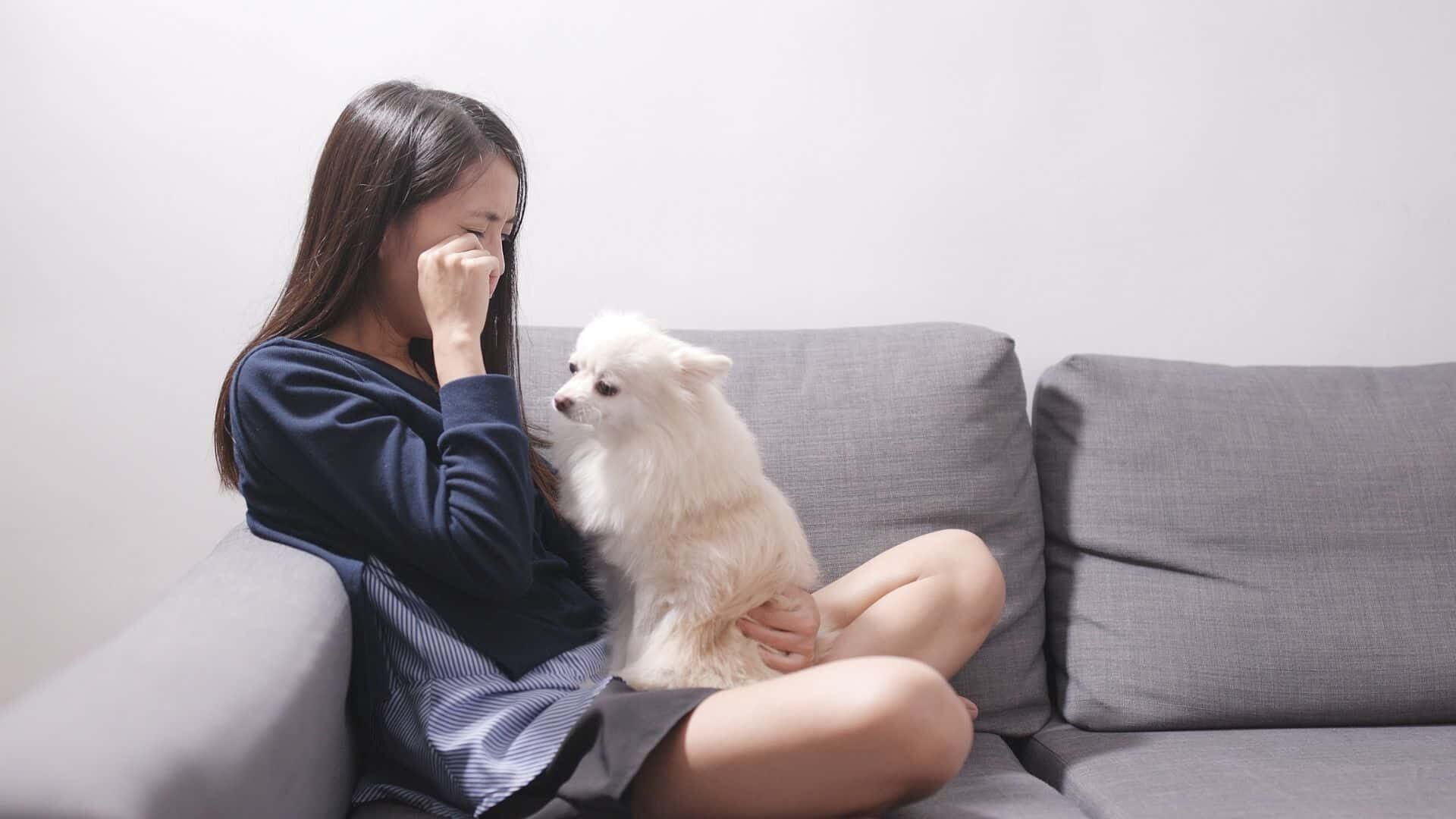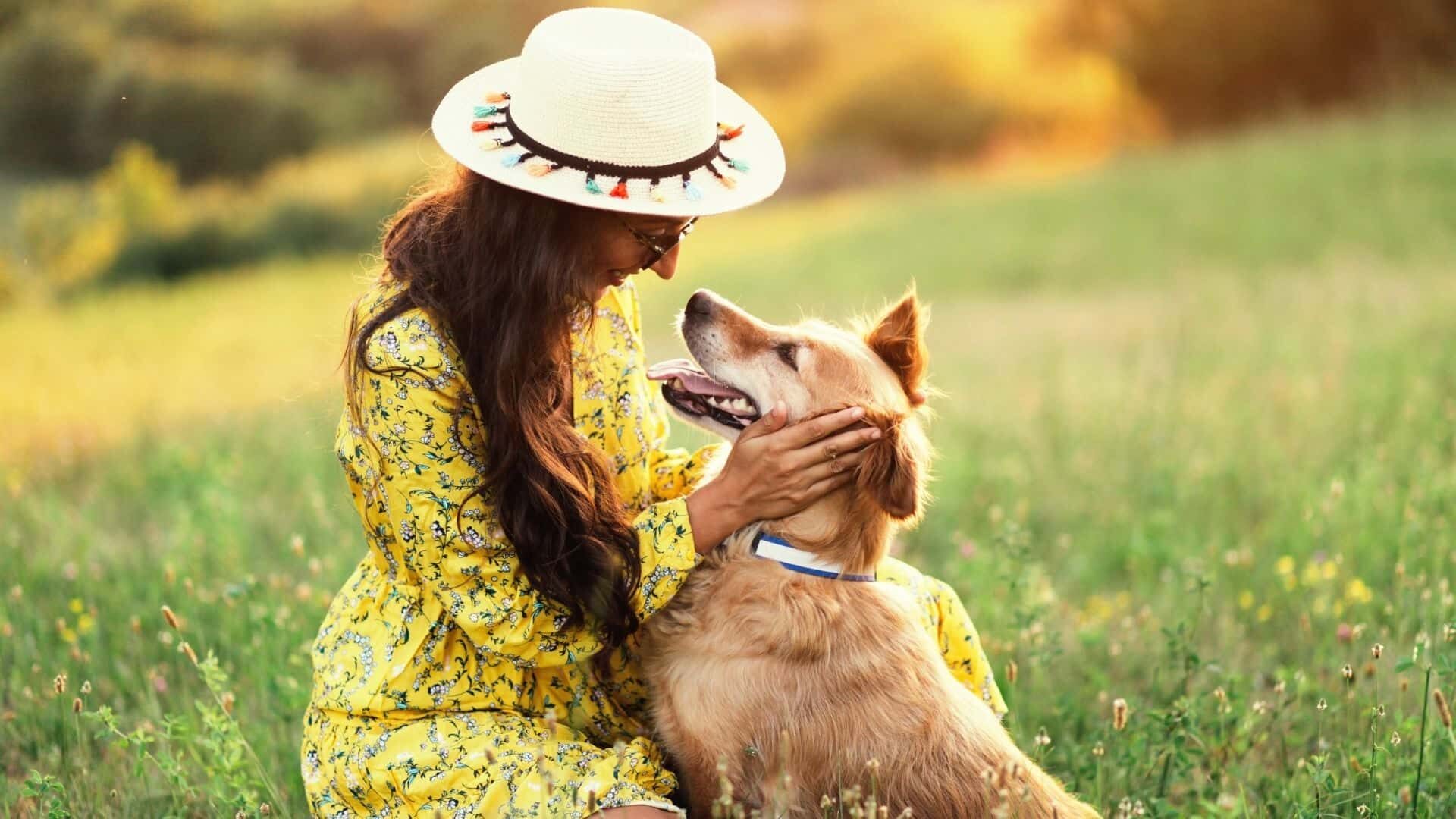Canine language has no exact translation for the type of crying that humans do. When dogs are sad, they do not cry hot, salty tears, nor do they wail or sob like humans. As a result, interpreting a dog’s cry can be difficult. When we talk about a whimper or whine, the canine “cry” can mean a million different things.
Whimpering or whining dogs, like barking dogs, are attempting to communicate. Dogs whine at their owners for a variety of reasons, including excitement, anxiety, frustration, pain, attention-seeking, and resource solicitation.
Most of the time, these sounds are intended to convey a desire for food, water, a potty break, a toy, attention, and so on. This is how puppies communicate with their mothers, by “asking” for something with a plaintive whimper or whine. So it’s no surprise that adult dogs use the same vocal impulse when communicating with their owners.
7 reasons why your dog cry when you come home

The following are six common reasons why your dog may be crying when you arrive home, as well as what makes them more likely to be the main cause.
1. Excitement
It could be because it is exciting. This is more likely if it cries with other signs of excitement, such as wagging its tail, jumping up at you, licking you, or wide-open eyes. It may be excited because it dislikes being left alone and is anticipating the rewards you may have in store for it.
2. Separation anxiety
Another possibility for why it cries when you arrive home is that it suffers from separation anxiety. This is where it dislikes being left alone and becomes anxious when left alone. This is more likely to be the cause if it exhibits signs of anxiety when you are leaving.
It would be beneficial to try to reduce how anxious it becomes by allowing it to pee, exercising it, and feeding it before leaving. It would also be beneficial to try to return on a regular basis so that it does not have to be alone for too long.
3. It requires the following from you
It’s possible that it does it because it wants something from you. This is more likely if it does it more frequently when it has previously been unable to obtain things like food or exercise. In this case, it may be beneficial to provide it with food and exercise before leaving it so that it does not have to wait long for those things.
4.Motivating the behavior
It could also be that it has learned that when it starts crying, it gets what it wants. If you tend to give it things like toys, treats, or extra attention when you get home, it will likely cry more when you get home in order to get more rewards.
Instead, rewarding it when it does not cry and waiting for it to stop crying before giving it things it might want would be beneficial.
5. Needing to urinate
It might be doing it because it needs to pee or poop. This is more likely if it wants to go outside as soon as you get home and if it has to wait a long time to pee when you are gone. It would be beneficial to try to let it pee just before you leave and to return on a regular basis to let it out to pee so that it does not have to wait too long.
6. A problem with the room it stays in
Crying when you get home could also indicate that there is a problem with the room it stays in. This is more likely if it has started crying since being forced to stay in a different room. The issue could be that it is too loud, too hot, or that there isn’t enough space for it to lay down.
7. As a result of pain and discomfort
When dogs are in pain, they can be very vocal. They will howl and whine to express their discomfort and vulnerability. They can’t tell us where their pain is coming from, so this is how they communicate with us.
It’s possible that your dog has been lying down all day, waiting for you to come home. They then stand up to greet you, and the pain begins… meaning you think you’re howling when you get home for various reasons.
When your dog whines or howls, keep a close eye on their body. Before calling the vet for a professional diagnosis, look for any unusual or painful movements.
Should you ignore if your dog is crying?
Yes, you should ignore the dog’s constant whining.
This is much more difficult than it sounds because simply smiling or glancing at the dog is enough attention for him. You’ll learn to recognize your dog’s whines well enough to tell whether he or she is simply seeking your attention or if something is seriously wrong.
While this may appear to be the most unlikely reason for your puppy’s whining, it is actually quite common. Your dog is very intelligent. If your dog only whines for attention, it’s best to ignore him. Then, when he is quiet and not making any noises, give him the attention he deserves.
How to stop your dog from crying when you come home?

If your dog is constantly whining, it’s best to try to figure out why before you try to correct the behavior. Some people don’t mind a little whining now and then, whereas others can’t stand it and find any amount of whining to be excessive and irritating. The good news is that you can train your dog to whine less—or even stop whining altogether.
1. Pay close attention to the sound of your dog’s whining and any accompanying behaviors
You may notice different pitches and volumes of whines over time for a variety of reasons. You may become acquainted with the “I want something” and “I’m bored” whines, for example. Then, if you hear a whine that is noticeably different, you may be able to determine that the source is, in fact, stress or pain.
2. Approach your dog with caution and handle it gently
if the whining appears to be caused by stress or pain. If this is the case, the whining may escalate and even become aggressive.
3. Examine the situation objectively
Before deciding how to proceed, examine the situation objectively and consider the possible causes of the whining. Never punish or yell at your dog for whining, as this can exacerbate a fearful or anxious dog’s anxiety and lead to aggressive behavior.
4. If your dog appears fearful, anxious, or stressed, try to identify the source of the problem
Dogs can suffer from a variety of fears and phobias. If you can identify the cause, you may be able to work on training and desensitizing your dog to help it overcome its fear.
5. Under certain conditions, give your dog what it wants
For example, if your dog is whining to go outside for a potty break, it is better to let it out rather than reinforce indoor elimination behaviors.
6. Avoid unintentionally inducing whining in your dog
If you’re certain your dog wants something, such as attention or food, redirect it to a different behavior before giving in. Ideally, get your dog to sit or lie down quietly, then reward it with attention, praise, or a treat.
7. Don’t immediately give in to your dog’s “want,” as this will train it to whine about everything
This is the most common reason for whining. Yes, it’s difficult to resist your whining puppy, but if you give in every time, you might end up with a whiny adult.
8. Improve their surroundings
Make sure they have plenty of toys to play with and that they get plenty of exercises. A dog that is tense physically or emotionally is more likely to whine.
Is my dog crying when I come home due to separation anxiety?
Yes, your dog may cry when you return home because of separation anxiety.
Separation anxiety is characterized by dogs who are overly attached to or dependent on family members. When they are separated from their owners, they become extremely anxious and exhibit distress behaviors such as vocalization, destruction, or house soiling. Most dogs who suffer from separation anxiety try to stay close to their owners, following them from room to room and spending little time outside alone.
They frequently exhibit anxiety as soon as the owners prepare to leave. Many of these dogs, but not all, crave a lot of physical contact and attention from their owners. They may be restless, shake, shiver, salivate, refuse to eat, or become quiet and withdrawn during departures or separations, in addition to vocalization, destruction, and elimination.
Although the behavior typically occurs every time the owner departs, in some cases it may only occur on specific departures, such as workday departures or when the owner departs again after returning home from work. Dogs suffering from separation anxiety are frequently excited and aroused when their owner returns.
Separation anxiety may be avoided if puppies are given regular opportunities to spend time alone in their own crates or beds. Some dogs appear to have separation anxiety, but they are afraid to be alone at home because something bad has happened to them while they were alone (e.g., storms, fireworks). Dogs who suffer from both separation anxiety and noise or storm phobias will require treatment for both issues.
What are the signs that your dog has separation anxiety?

Returning to a dog who is overjoyed to see you doesn’t mean he or she hasn’t been suffering in silence while you’ve been gone. You may be aware of the obvious signs of separation anxiety in dogs, such as furniture destruction or barking, but did you know that there are other signs that you may be overlooking?
The following are the most common symptoms of separation anxiety in dogs:
- Destructive behavior – such as chewing and destroying furniture, as well as howling and barking
- Noise – such as howling and barking
- Toileting – weeing or pooing in the house
Other less common symptoms (that are more easily overlooked) include:
- Trembling, whining, or pacing
- Excessive salivation
- Self-mutilation
- Repetitive behavior
- Vomiting
Taking the time to check for these signs by filming your dog when he or she is alone at home will help you spot potential problems, even if you don’t believe there are any.
How to help your dog with separation anxiety?
1. Establish a consistent routine
Because your dog is anxious, you should start by making his day calmer and more predictable, whether you are at home or away.
Create a daily routine for your dog so that he can learn to predict when he can expect attention (including exercise, feeding, training, play, and elimination) and when he should expect inattention (when it should be napping or playing its favored toys). Schedule these times for object play and naps during your normal departure times.
2. Enrichment of the environment – meeting your dog’s needs
When you’re interacting with your dog, make sure you’re meeting all of his needs for social interactions, play, exercise, training, and elimination. In effect, you should initiate enough regular interactive sessions and provide enough play and attention that your dog is ready to settle down and relax when each session is over.
At this point, new exploratory and chew toys can be given to your dog so that he has new and motivating toys to focus on when it is time to settle. Feeding toys can also be used instead of standard food bowls to make feeding time more of a mental and physical challenge.
3. Create a reward protocol that is predictable
If your dog suffers from separation anxiety, it’s likely that the attention and play that you provide are his or her preferred rewards. Treats, food, play, and chew toys may also be appealing.
“Which behaviors does my pet need to learn, and which should I never reinforce?”
Take each of your dog’s most valuable rewards and consider: “What behavior does my dog need to learn?” and “What behavior should I never reinforce?” When your dog has separation anxiety, you must reinforce him for settling down, relaxing, and displaying some independence, whereas attention-seeking and following behaviors should never be reinforced.
As a result, training should concentrate on long and relaxed down stays, as well as going to a bed or mat on command (see Teaching Calm – Settle and Relaxation Training). If your dog is looking for attention, you should either ignore him completely until he calms down, or have him do a down-stay or go to his mat.
Give attention or affection as a reward after a sufficient amount of time in the down-stay or on the mat. Shape longer periods of inattention before paying attention. The goal is to ignore attention-seeking behaviors rather than the dog. You want your dog to understand that the only way to get attention is to be calm and quiet.
4. Practice “settle” (as described in Teaching Calm – Settle and Relaxation Training)
The goal of training is for your dog to learn to relax on cue. Before you give your dog a reward, make sure he is calm and lying on his bed or mat (or crate).
Not only should attention-seeking behavior be ignored, but all casual interactions should be avoided for the first few weeks so that both you and your dog understand that a settled response results in rewards and attention-seeking does not.
Use food lures, clicker training, or head halter training to practice down stays and mat exercises, whichever is most effective. Shape longer stays and longer times on the bed or mat before receiving attention, affection, treats, or play.
5. Create a relaxation area and surface
Having a bed or mat location (in a room, pen, or crate) where your dog can be taught to rest, nap, play with his toys, or even sleep can provide a secure area for your dog to settle in when you are not home. You can start by teaching your dog to go to the area and then gradually shape longer stays and more relaxed responses in the area before rewarding them. It may be useful to have a barricade, tie-down, or crate that can be closed to ensure that your dog stays in the area for a sufficient amount of time before being released at each session.
Know your dog’s limits, on the other hand; your dog must be calm and settled when released to avoid reinforcing crying or barking behavior. Initially, you can take your dog to this area as part of his training routine by luring him with a toy or treat, or by using a leash and head halter. After a while, a daily routine should be established in which the dog learns to lie down on his mat after each exercise, play, and training session to either nap or play with his own toys.
This is similar to the crate training routine, in which the mat or bed becomes the dog’s bed or playpen. Aside from play, exercise, and training sessions, limit your dog’s rewards (treats, toys, chews, affection, feeding toys) to this area. Because they are associated with relaxation and owner presence, audible cues such as a radio or TV; odors such as aromatherapy candles or a piece of clothing with the owner’s scent; and a comfortable bed can all help to promote a relaxed response (non-departure).
6. Practice responding to simple commands
It is also beneficial for some dogs to make them earn everything. It can be as simple as having the dog respond to a command like “sit” before receiving whatever he desires. For example, if your dog requests to go outside, the dog is given the command to “sit” before the door is opened, and once he complies, the door is opened. This method can be used for anything the dog wants.
Watch 14 signs your dog doesn’t love you (even if you think they do) | Video
When I get home, why does my dog start cry?
It’s safe to say that your dog looks up to you as her idol. As a result, when your dog sees you, she is overjoyed to be with you. She cries because it is her way of expressing her joy. Our dogs will whine and cry to communicate their emotions to us, just as we cry, laugh, and express ourselves through our voices.
Why is a dog crying for no apparent reason?
Dogs whine at their owners for a variety of reasons, including excitement, anxiety, frustration, pain, attention-seeking, and resource solicitation. Most of the time, these sounds are intended to convey a desire for food, water, a potty break, a toy, attention, and so on.
How do you stop a crying dog?
Ideally, get your dog to sit or lie down quietly, then reward it with attention, praise, or a treat. Don’t immediately give in to your dog’s “want,” as this will train it to whine about everything. This is the most common reason for whining.
Do your dogs miss you?
It is not uncommon for dogs to grieve the loss of a person with whom they have bonded who is no longer present. Dogs understand the emotional feeling of missing someone who is no longer a part of their daily lives, even if they don’t understand the full extent of human absence.
What happens if I don’t pay attention to my dog?
When you start ignoring the behavior correctly, you will most likely see an extinction burst in dogs who have previously been reinforced for barking or jumping. They are working on unlearning the association that barking/jumping = attention.
Conclusion

Dogs adore their owners more than anything else on the planet. In fact, your interactions with your dog can cause your pet to cry or smile. Whether you’re spending the day together or just saying hello to your dog, he or she will appreciate who you are and the time you’ve spent with them.
Bottom up
Please comment below about your ideas and share this “Why Does My Dog Cry When I Come Home: Guide to Stop Crying” article with your friends.
Stay tuned with our website to find out more exciting stuff. Don’t forget to check out our previous articles too.
Until the, Read about, What Are the Symptoms of Dogs with Allergies: Guide to Cure




